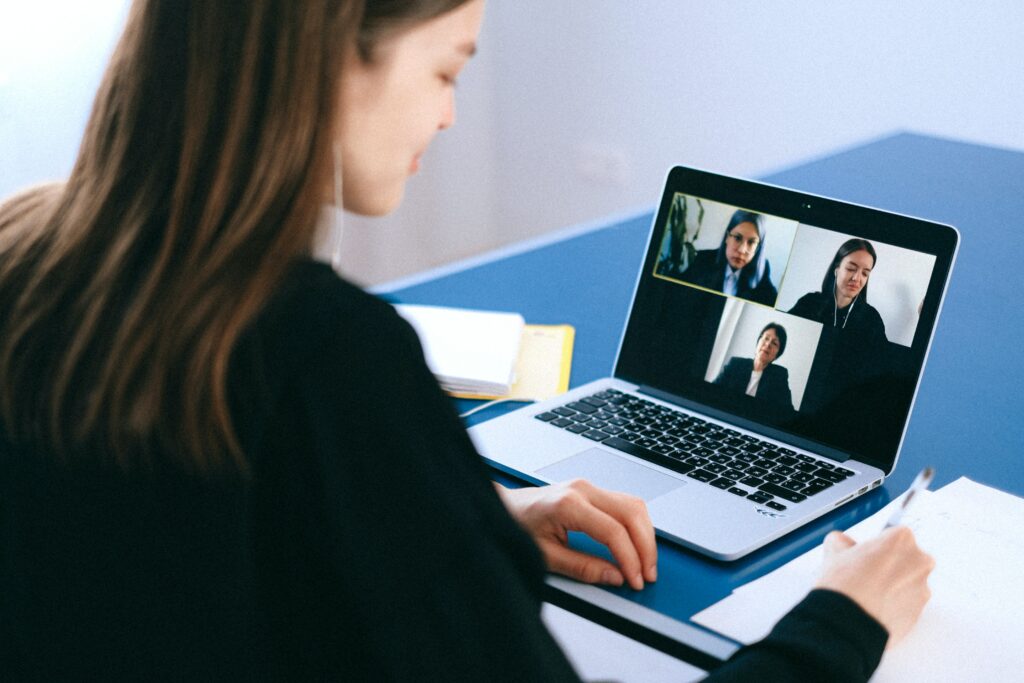Researched and written by Evangelos – ~4 min read

Adapt or Perish: Will Remote Interpreting Replace On-Site Interpreting?
In recent years, the world has witnessed a remarkable transformation in how we communicate and conduct business. Technological advancements, coupled with global events like the COVID-19 pandemic, have accelerated the adoption of remote work and remote services across various industries. One such industry facing significant changes is language interpretation. The debate over whether remote interpreting will replace on-site interpreting has gained traction, with proponents and skeptics offering compelling arguments on both sides. In this blog post, we will delve into the evolving landscape of language interpretation, exploring the potential of remote interpreting to reshape the industry.
The Rise of Remote Interpreting
Remote interpreting, also known as telephone or video interpreting, involves interpreters providing language services to clients through audio or video conferencing platforms. The advantages of remote interpreting are evident and have contributed to its rapid growth:
- Cost-Efficiency: Remote interpreting eliminates the need for travel and accommodation expenses, making it a cost-effective option for both clients and interpreters.
- Accessibility: Remote interpreting enables access to a broader pool of interpreters, allowing clients to find specialized expertise that may not be available locally.
- Global Reach: Language barriers are no longer an obstacle for international organizations, as they can easily connect with interpreters from around the world.
- Flexibility: Clients can schedule interpreting services at their convenience, providing more flexibility in meeting their language needs.
- Pandemic Response: The COVID-19 pandemic forced many interpreting services to shift online, accelerating the adoption of remote interpreting as a necessity.
The Value of On-Site Interpreting
While remote interpreting offers undeniable advantages, on-site interpreting remains a crucial component in many scenarios. Here’s why on-site interpreting is not likely to disappear anytime soon:
- Human Connection: In situations where empathy and human connection are vital, such as healthcare settings or legal proceedings, the physical presence of an interpreter can provide comfort and reassurance to clients.
- Non-Verbal Cues: On-site interpreters can better observe and interpret non-verbal cues, including body language and facial expressions, which are essential for accurate communication.
- Security and Privacy: In sensitive discussions, such as in legal or medical contexts, clients may have concerns about the security of remote interpreting platforms.
- Technical Limitations: Remote interpreting relies on stable internet connections and technology, which can sometimes fail, leading to disruptions in communication.
- Cultural Context: In some cases, on-site interpreters may have a deeper understanding of the cultural nuances and local customs that are critical for effective communication.
A Hybrid Future?
It’s unlikely that remote interpreting will completely replace on-site interpreting. Instead, a more likely scenario is the emergence of a hybrid model, where both approaches coexist, complementing each other. This hybrid model can offer the best of both worlds:
- Flexibility: Clients can choose the mode of interpretation that best suits their needs, balancing cost, convenience, and the nature of the interaction.
- Enhanced Service Accessibility: Remote interpreting offers an affordable solution for individuals and organizations operating on tighter budgets, while on-site services will continue to cater to those with more extensive budgets and requiring in-depth local and cultural knowledge.
- Immediate Access for Specialized Needs: Remote interpreting can provide immediate access to interpreters for less common languages and specializations, while on-site interpreters continue to be essential for complex and sensitive situations.
- Advanced Technology: As technology continues to evolve, remote interpreting platforms will become more reliable, addressing some of the current limitations.
- Training and Certification: The industry can establish standardized training and certification programs to ensure that interpreters are proficient in both remote and on-site interpreting.
In conclusion, the future of language interpretation is evolving, with remote interpreting gaining prominence due to its cost-efficiency, accessibility, and convenience. However, the irreplaceable value of on-site interpreters in specific situations means that a complete shift is unlikely. Instead, a hybrid model that combines the strengths of both remote and on-site interpreting is poised to define the future of the industry. As we continue to adapt to the changing landscape of global communication, the key is to remain flexible, open to new possibilities, and hire expert language professionals with a proven interpreting track record, ensuring that language barriers do not hinder progress and understanding in an interconnected world.





